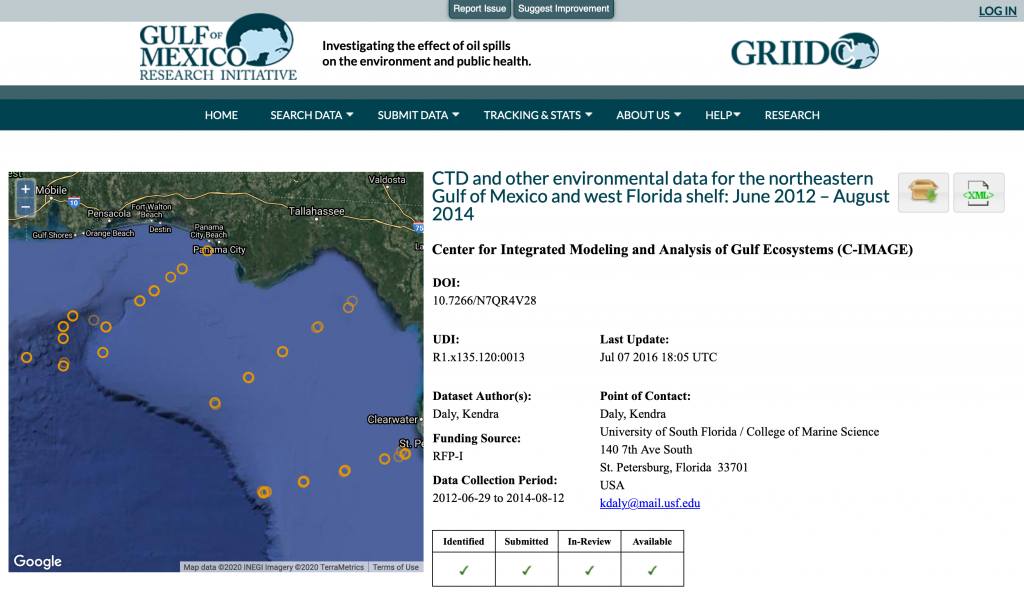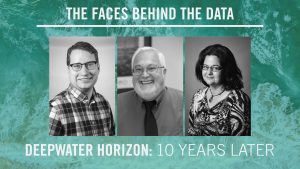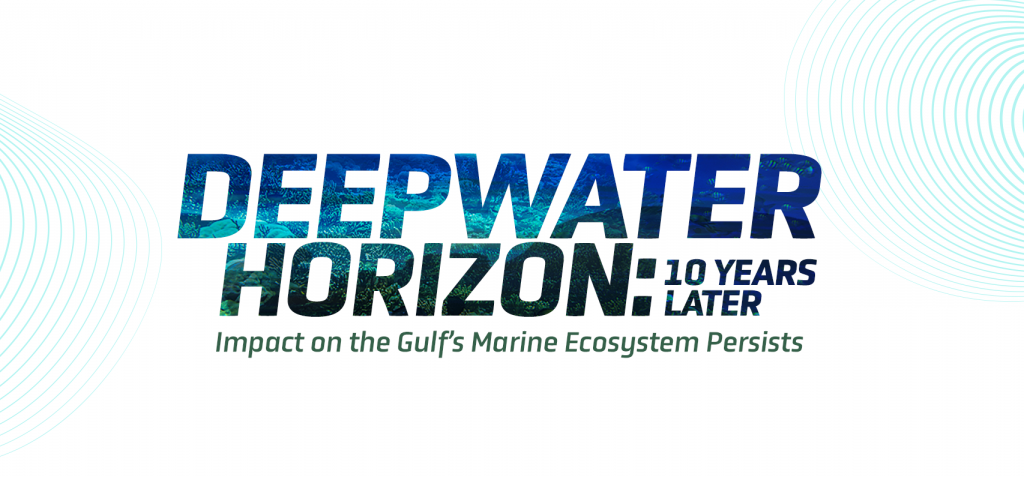|
Getting your Trinity Audio player ready...
|
Ten years ago, on April 20, 2010, the BP oil spill began. The spill, also known as the Deepwater Horizon oil spill, marked an unprecedented environmental disaster in the Gulf of Mexico. To develop ways to mitigate and understand the devastating spill, and research ways to prevent it from happening again, BP contributed $500 million in funding through GoMRI (Gulf of Mexico Research Initiative). GoMRI then awarded millions in grants to academic institutions and research consortiums to embark on a decade-long research project.
C-IMAGE (Center for Integrated Modeling and Analysis of Gulf Ecosystems) is one of the consortiums, led by the University of South Florida. They were awarded $36 million to research the effects of the oil spill in marine environments starting in 2011, and received the funding over three different installments. They are currently in their third and final phase, as indicated on their website: C-IMAGE III.

USF faculty and students from across the institution were involved with C-IMAGE conducting research and contributing data. The data is managed by the USF Libraries, who received a portion of the funding to coordinate, catalog, and make the data accessible. “It was important that the data be open access [i.e. free],” said Todd Chavez, Dean of the USF Libraries and the inaugural C-IMAGE team lead for data management. The data was held in GRIIDC (Gulf of Mexico Research Initiative Information and Data Cooperative), a data repository that was also funded by BP after the spill.
Resources have been made available to ensure the data on GRIIDC is accessible for an additional two years, but its long-term availability is uncertain. In an effort to ensure data produced by C-IMAGE researchers remains openly accessible, the USF Libraries will continue to manage, archive, and make the data accessible in Scholar Commons, USF’s institutional repository—preserving USF researchers’ data in perpetuity.

The role of the USF Libraries was active in the C-IMAGE partnership, particularly how we managed the data. “We had a major role in establishing the standards we would employ. We were engaged members of the group,” said Chavez. “We advocated early-on to use a well-represented ISO standard to ensure our data was well described, discoverable, and useful for researchers.” (“ISO standards are internationally agreed by experts. Think of them as a formula that describes the best way of doing something.”)
To dive in deeper, the C-IMAGE data management team, made up of Chavez and Beverly Caggiano (former USF librarian and programmer), contributed to strategies for storing the data. Traditionally, data would be organized by format: video, audio, text-based, etc. Each format would be stored on its own server, a practice that could hinder discoverability and complicate management. “It’s like creating separate neighborhoods of data, siloed by format, therefore creating a barrier to access,” Chavez explained. The ultimate game-changer was metadata and how it was used.
“Traditionally, people didn’t use metadata very well to describe data,” Chavez continued. “So what we did, is implement a ‘generalized repository structure,’ the big bucket method if you will. We put all the data in a big bucket, and use metadata to identify the different formats, to describe the data. In one big bucket, you see all the data that meets search terms regardless of format, and you can find the data you need, and maybe even data you didn’t anticipate. By using the power of metadata, we could provide greater levels of access and discoverability.”
This year, the USF Libraries were recognized by the C-IMAGE consortium members with an award, as a way of thanking us for our contributions to the partnership. Jason Boczar, Digital Scholarship and Publishing Librarian, received the award on the Libraries behalf, as he and Carla Fotherby, C-Image Collections Specialist, now manage and archive the C-IMAGE data at the USF Tampa Library.

C-IMAGE is a valuable research partnership here at USF, and with the Libraries, and represents USF’s commitment to producing and preserving valuable research. This research will eventually become its own collection in the new USF Libraries’ Environment and Natural History Collection, furthering research and learning while continuing to inform solutions to environmental calamities.
To learn more about this special university partnership and anniversary, head to USF News.
